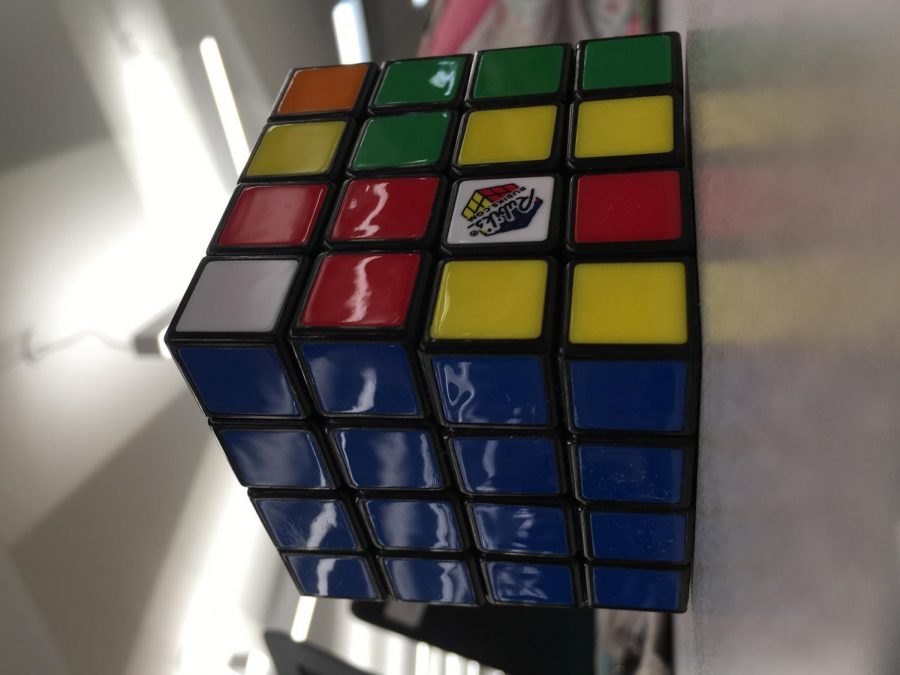Can you solve the puzzle?
December 18, 2017
In the hallways, in the cafeteria, in the library, and even in the classrooms….you can hear a faint whirring noise. Especially in your social studies class, you can spy sly students attempting to conceal this puzzle under their desks, occasionally shooting a casual look at it to see if they have at last solved this baffling enigma. So what is this puzzle? The Rubik’s cube, which has taken over our daily student lives.
As many students know, the Rubik’s cube is typically a 4 by 4 or 3 by 3 three-dimensional cube toy, with multicolored squares. In order to complete the puzzle, you must turn each row/column every which way, so each full side is one color. In example, one side would have to be green, one would have to be red, and so on until the cube is complete.
The Rubik’s cube is no kindergarten jigsaw puzzle, however. Chances are, you’ll NEVER, EVER, encounter a person who can solve it completely, although some DFMS seventh graders have come close. I’ll give you the first step to it from the official Rubik’s cube website; solve the white cross first.
You may think the Rubik’s cube recently gained its popularity. This isn’t true. In 1974, a man named Erno Rubik invented the Rubik’s cube. After that, business boomed in the 1980s. Everyone wanted a Rubik’s cube, from newscasters to children. The amount of people who can confirm they cracked the cube is as many people in the 80s as today. Apparently, though decades have passed, no one is closer.
Sure, people have solved it. Just search for “fastest Rubik’s cube solving” and you’ll instantly have videos of people solving the cube in seconds, some with just one hand. But when I had said you’d never encounter another person, I meant ordinary civilians. These YouTube people are probably at the Rubik’s cube championships right now. But civilians, and students at DFMS? Not that high in stardom yet.
It’s surprising that Principal Mussolini still hasn’t banned these innocent cubes sitting on your desk. Especially after last year, when there was a banning rampage of slime, fidget spinners and cubes, and stress balls. How have Rubik’s flown under the radar? Who is to know? Perhaps students have been extra careful about concealing their puzzle, hating it to be taken away. Perhaps teachers have been more lenient this year. Perhaps Principal Mussolini has an express fondness for Rubik’s cubes himself. The mystery can never be solved, much like its originator, the cube.
The Rubik’s cube craze will probably last a long time in Dobbs Ferry. When asked why they were so popular, Amerigo Sarno (a parent of a DFMS seventh grader) said, “It has many practical features. It doesn’t need batteries, you can use it anywhere, it’s inexpensive. It’s a real deceptively simple challenge that you don’t come across every day.” Amerigo also relates the Rubik’s cube to the game of chess. He comments, “[Both the Rubik’s cube and chess] force you to think many moves ahead in order to devise a solution. Many people have failure in doing that, so it really appeals to the public in a new sense.” Almost as an afterthought, he chuckles to himself. “It’s interesting to note that it’s still a raging fad now; as it was when I was that age.”
